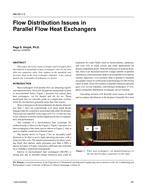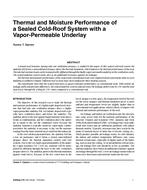The purpose of this study was (1) to develop a data base of thermal insulation values for wide variety of bedding systems, with and without clothing and (2) to develop and evaluate predictive equations for estimating the insulation provided by bedding systems. In addition, the effect of changing the amount of body surface area covered by bedding was studied. An electrically heated manikin in an environmental chamber was used to measure the insulation provided by different combinations of sheets, blankets, bedspreads, comforters, and sleepwear, including the insulation provided by the mattress, pillow, and surrounding air layer (1.15 clo). Total insulation, IT, values ranged from 1.9 clo for a flat sheet to 4.9 clo for a sheet, two blankets, a bedspread, and a comforter. A data set of insulation values for bedding systems containing clothing was used to develop a series of linear regression models for predicting the total insulation provided by bedding systems. Equations were developed based on variables such as bedding and clothing thickness, bedding and clothing weight per unit area, and the amount of body surface area covered by the bedding and clothing components. Equations with as many as four variables explained up to 92% of the variance in bedding system insulation. Hopefully, the results of this study will be used to revise ASHRAE Standard 55-1981 and ASHRAE Handbook-1985 Fundamentals to include information on the insulation provided by bedding systems.
Units: Dual
Citation: Symposium, ASHRAE Transactions, 1987, vol. 93, pt. 1, New York, NY
Product Details
- Published:
- 1987
- Number of Pages:
- 14
- File Size:
- 1 file , 1.4 MB
- Product Code(s):
- D-NY-87-08-3


